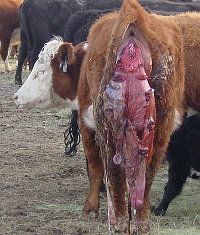VIVO Infectious Diseases
Overview of Coxiellosis (Q Fever)

During 1935 in Brisbane, Australia there was a group of slaughterhouse workers that became sick with a fever of unknown origin. Blood from those patients was injected into guinea pigs and those animals also developed disease. Subsequently, a novel organism was identified and the mysterious disease was named "query fever", shortened to Q fever. At almost the same time, scientists in Montana fed ticks on guinea pigs and some of those animals also developed fever and disease. Again, a previously unknown organism was ultimately identified as the causative agent. The new organism was named Coxiella burnetii after McFarland Burnet and Herald Cox, the two scientists principally responsible for its isolation and initial characterization.

C. burnetii has a global distribution with the apparent exception of New Zealand, where it has not been identified. The host range of Coxiella is extensive and virtually any vertebrate can be infected. Having said that, ruminants such as goats, sheep and cattle are the principle reservoir hosts responsible for transmission of the organism to humans. Coxiella infection of those animals typically results in mild or subclinical disease, but the organism replicates tremendously in the pregnant reproductive tract and mammary gland, sometime leading to abortion and to shedding of huge numbers of bacteria in association with birthing and in milk. Importantly, the organism is quite resistant to drying and the large number of bacteria shed at birth from infected ruminants contaminate the environment and pose a threat for infecting other animals and humans. In addition to vertebrates, numerous species of ticks have been shown susceptible to infection with C. burnetii. Infected ticks excrete large quantities of the bacteria in their feces, but appear to be an uncommon source of infection to humans or animals.
People most commonly become infected with C. burnetii when they assist in the birthing of infected livestock or drink milk that contains the organism. Q fever in humans usually develops 2-3 weeks after infection and is manifest by fever, chills and sweats, fatigue and other symptoms common to several other infectious diseases. A majority of infected people recover without treatment, but antibiotic therapy is recommended if the disease is not mild. A critical problem arises in a small fraction of infected patients, in which the disease progresses to a much more serious form called chronic Q fever that requires prolonged antibiotic treatment and can be life threatening.
A final point to be made concerns the potential for C. burnetii to be used as a biological weapon. It is highly resistant in the environment and, although rarely lethal, could be used as an incapacitating agent. Hence, research with this organism is strictly regulated in many countries.
Updated 2022; send comments to Richard.Bowen@colostate.edu

